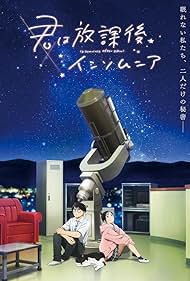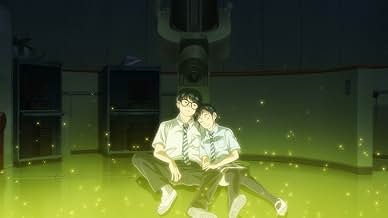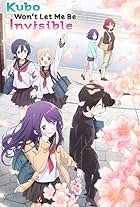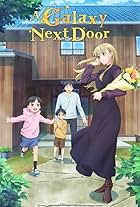Despite the well-known clichés (types of the main characters, conventions of Japanese romance) and the unevenness of the narrative, "Insomnia" definitely stands out from other slice of life romances and leaves a pleasant impression. The character design is the first thing that draws attention. Makoto Ojiro managed to create her own, original style of drawing, which is very well combined with her style of narration. Like the story, Makoto's drawing is quite original, but not catchy and pretentious, but calm and pastel. Like the story, her art lacks a bit of stability and elaboration.
A pair of protagonists is quite typical - a gloomy, insecure, hyper-reflexive psychasthenic guy, exaggeratedly suffering from learned helplessness, and his girlfriend - a cheerful, active, athletic, careless sanguine girl. The only thing they have in common is that both suffer from insomnia and, by chance, become members of the astronomical club. One more thing - this couple of lovers becomes sleepy from each other, which in their case, paradoxically, is a mutual compliment ) It is obvious that Isaki (the girl) is attracted by stability and reliability of the guy, and the guy (Ganta) is attracted by Isaki's cheerfulness and liveliness. And, unfortunately, it is also obvious that, due to the conventions of Japanese romance, confessions occur only at the very end. This is such a "hackneyed" cliché that it can't even be considered a spoiler. But the secondary characters, with whom Makoto seems to have allowed herself a certain freedom from cliches, are pleasing - especially the mature and reasonable Tao and the eccentric geek girl Yui.
As for the story, it turned out to be somewhat chaotic. It seems that after starting the story, Makoto could not decide for some time what and how she wanted to tell. This shift from calm, Seinen storytelling, to melodramatically exaggerated shojo-style platitudes, to geeky meditativeness (the technical details of camera setup, shooting the night sky), may well alienate some viewers. At times, the plot is filled with reflections and experiences of the main characters about their lives and short excursions into the stories of other characters, and at times it becomes empty and simply boring. But, in its second half, the story does decide what it is (calm, meditative Seinen romantic slice of life with a contemplative protagonist, his sweet, cheerful girlfriend and a pinch of geekiness), and ends with a completely successful ending. Even a certain personal growth of the boy is shown, when he, contrary to his obedience and responsibility, decides on an act that violates the rules, a "rebellion" against someone else's will. For his girlfriend, of course.
In general, "Insomnia" is a pretty good representative of Seinen romantic slice of life. What gives it some originality, apparently, is the fact that this is a Seinen created by a woman who could not help but bring the originality of her vision to this genre. As well as her own, peculiar, drawing. Although both the narration and the art style of Makoto are still unstable and raw, they undoubtedly have their own individuality. Just for this "Insomnia" definitely deserves attention.






















